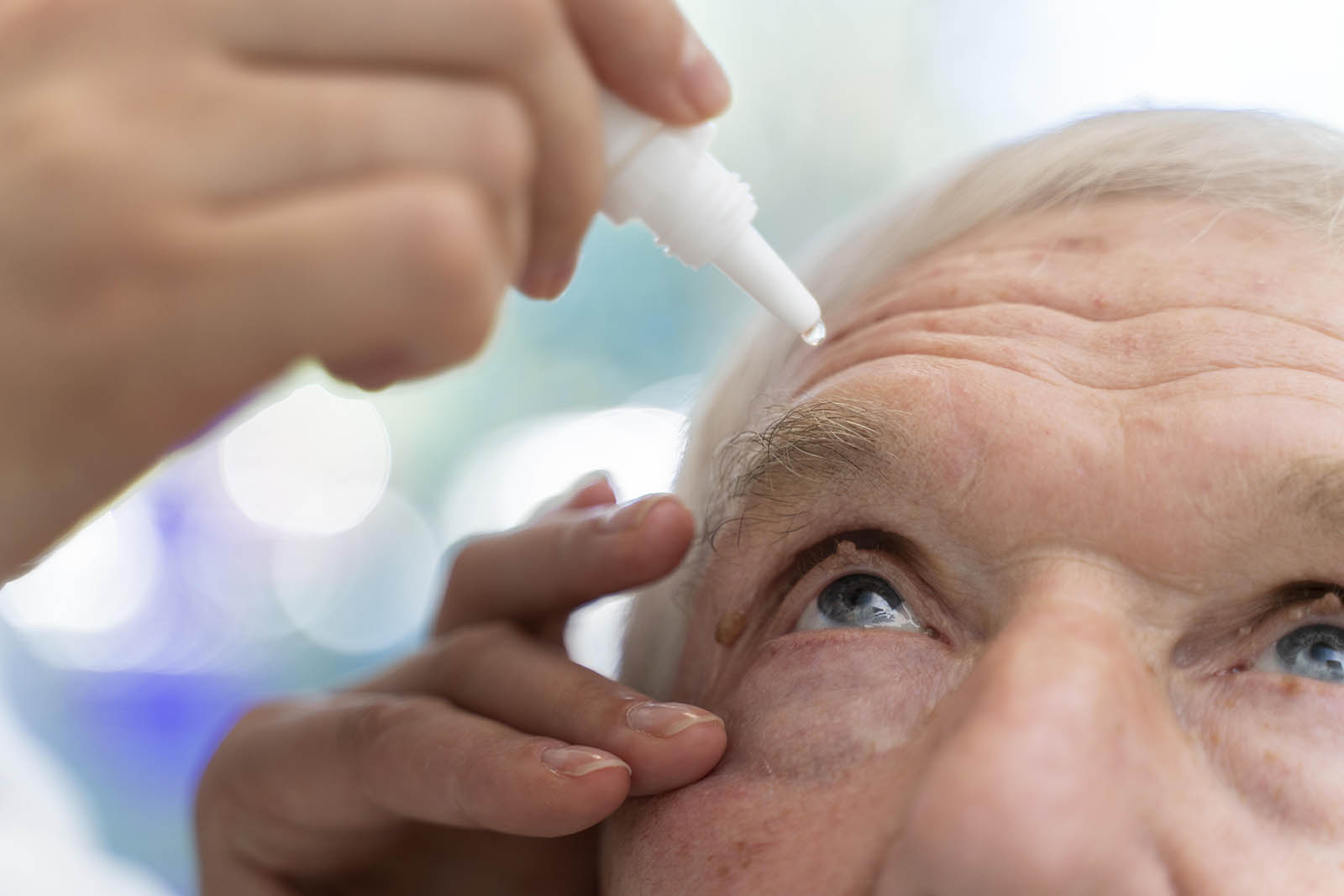The tonometry is an ophthalmological test that is performed for measuring intraocular pressure and detect possible problems such as glaucoma. This test is carried out by various methods such as flattening, rebound or non-contact tonometry, and is painless although it may cause a sensation of corneal roughness. Normal results are between 10 and 21 mmHg and abnormal results may indicate eye health problems.
It is recommended that this test is performed regularly from the age of 40. This article will explain in detail the preparation for the test, the risks and complications, how the eye tonometer works, the types of eye tonometry, references and frequently asked questions about the test. In addition, we will discuss the importance of the early detection of glaucoma and the role of the ophthalmologist in the performance and analysis of the tonometry test.
Preparation for the exam
Pre-tonometry instructions
Before tonometry is performed, it is important to follow certain instructions to ensure accurate and reliable results. It is recommended to avoid wearing contact lenses at least one hour before the test, as they may alter the intraocular pressure measurement. It is also advised not to apply make-up to the eyes or use creams near the eye area before the test.
Fluorescein dye: what is it and what is it used for?
In some cases, the ophthalmologist may use a special dye called 'fluorescein' to make the tonometry test more accurate. This substance is applied in the form of drops to the eye and can detect any deformities or irregularities on the surface of the eye. The fluorescein dye produces no pain or significant side effects and the patient may feel a slight burning or stinging sensation in the eye for a few seconds.
Perkins flattening tonometry: procedure and recommendations
Perkins applanation tonometry is one of the most common methods of measuring intraocular pressure. During this test, the patient sits in a chair while the ophthalmologist carefully places a small device (tonometer) on the surface of the eye. The cornea is then gently pushed to flatten it and measure the intraocular pressure. During this procedure, it is recommended that the patient looks at a fixed point on the ceiling or wall, without moving their eyes or blinking. The ophthalmologist may apply local anaesthetic drops or a lubricating gel to the eye to reduce discomfort or irritation during the test.
Risks and complications
Possible side effects of tonometry
It is common for anaesthetic eye drops to be used during tonometry, which may cause temporary blurring of vision or a stinging sensation in the eyes. In addition, you may experience a feeling of roughness of the cornea due to the pressure exerted during the examination. These side effects usually disappear within minutes after the examination.
Risk factors for developing glaucoma
There are some factors that can increase the risk of developing glaucomasuch as old age, ageing myopia, diabetes or ocular hypertension. In addition, people with a family history of glaucoma also have an increased risk of glaucoma.
Differences between abnormal and normal readings
The Normal intraocular pressure readings range from 10 to 21 mmHg, while abnormal readings may indicate problems such as glaucoma, hyphema or eye damage. It is important to remember that abnormal readings do not always indicate the presence of glaucoma, but they are a risk factor for its development. If an abnormal reading is obtained, further testing is necessary to rule out or confirm the presence of glaucoma.
What is ocular tonometry?
Tonometry is a test used to measure intraocular pressure in the eyes. This test is important for detecting problems such as glaucoma. To better understand what eye tonometry is, we can divide it into three parts:
The importance of intraocular pressure measurement
Intraocular pressure measurement is important because the increase in intraocular pressure is a pressure in the eye can damage the optic nerve and lead to vision loss. If glaucoma is not detected and treated in time, it can lead to irreversible blindness.
How does the eye tonometer work?
The ocular tonometer is the instrument used in tonometry. The test is performed by placing a small amount of anaesthetic in the eye to desensitise it. The tonometer is then placed on the surface of the eye to measure the intraocular pressure.
Parts of the eye on which the measurement is taken
The tonometry test measures the intraocular pressure in the cornea, which is the transparent layer that covers the front of the eye. Other areas where intraocular pressure can be measured include the sclera, conjunctiva and the edge of the iris.
Types of ocular tonometry
Flattening tonometry: what is it?
The flattening tonometry is one of the most common methods of measuring intraocular pressure and detecting glaucoma. This test is performed with an eye tonometer and anaesthetic drops to reduce discomfort. The procedure involves gently pressing on the cornea of the eye with the tonometer, which causes a temporary flattening of the cornea. From this data, the resistance of the eye is measured and the intraocular pressure reading is obtained.
Some recommendations to keep in mind before flattening tonometry are to avoid wearing contact lenses and to apply anaesthetic drops to reduce discomfort. As for the procedure, it is important to keep the patient's head still and not to press too hard with the tonometer to avoid damaging the cornea.
Rebound tonometry: advantages and differences with other methods
Rebound tonometry is a method of ocular tonometry that uses a small device that gently bounces on the cornea of the eye. Thanks to these bounces, the tonometer is able to measure intraocular pressure. This test is quick, accurate and does not require anaesthesia, making it ideal for measuring eye pressure in children or people who are afraid of invasive procedures.
One of the advantages of rebound tonometry is that it does not cause pain or discomfort, and no anaesthetic drops are required. It is also a contact-free method, which allows glaucoma to be detected without the tonometer touching the cornea. However, in some cases it can give inaccurate results and is not as accurate as other methods.
Non-contact tonometry: indirect glaucoma detection
The non-contact tonometry is a technique that measures intraocular pressure indirectly, as opposed to applanation or rebound tonometry. In this test, the patient is placed in a special device that blows a small puff of air into the eye. The distance the corneal surface travels in response to the puff of air is then measured, allowing the intraocular pressure to be calculated.
The advantages of non-contact tonometry include the accuracy of the results obtained, as the cornea does not suffer and no contact is required during the examination. In addition, this technique does not require the use of anaesthetic drops, which reduces patient discomfort. However, in some cases, the pressure obtained may be higher than the real pressure, which may result in false positives.
References
Other ophthalmological tests and examinations that can help in the diagnosis of glaucoma
In addition to tonometry, there are other ophthalmological tests which can aiding the diagnosis of glaucomaThese include gonioscopy, which analyses the angle of the anterior chamber of the eye, and biomicroscopy, which assesses the optic nerve and retina. Photographs of the optic nerve and optic nerve thickness analysis are also often performed to determine if there is eye damage due to glaucoma. The test that is most helpful in the diagnosis of glaucoma is undoubtedly computerised campimetry as a complement to tonometry. All these tests are complementary and help the ophthalmologist to determine whether glaucoma is present and how serious it is.
Medical, laser and surgical treatments used in specific glaucoma cases
The treatment for glaucoma varies according to its severity and evolution. In many cases, a treatment consisting of an eye drop that reduces intraocular pressure is used. If medication is not enough, there are surgical procedures that can help drain the aqueous humour and reduce the pressure. In addition, there are specific surgeries that can help in cases of glaucoma, and laser treatments such as selective trabeculoplasty. It is important to follow the right treatment to avoid further damage due to glaucoma and to preserve vision.
Frequently asked questions about tonometry
Can it be done at any age?
Tonometry is recommended from the age of 40, as the risk of developing glaucoma increases at this age. However, it can be performed at any age when there is a family history of glaucoma or other risk factors. In these cases, regular testing is recommended to detect any abnormalities in intraocular pressure.
Is the tonometry test painful?
Tonometry is not painful, although it may generate a sensation of roughness in the cornea of the eye while the measurement is being taken. It is a quick and simple test that requires no prior preparation.
Can tonometry be performed with contact lenses?
It is not recommended to perform tonometry with contact lenses, as these may alter the intraocular pressure measurement. It is therefore recommended that contact lenses be removed before the test is performed.
Is regular tonometry recommended?
Yes, regular tonometry is recommended from the age of 40 onwards. This allows early detection of glaucoma and the implementation of effective treatment to avoid possible complications.
Is it possible to perform tonometry in case of dry eye or eye inflammation?
Yes, it is possible. In fact, it is advisable to do so, as in many intraocular inflammations the pressure may be altered.
How should an abnormal test result be interpreted?
An abnormal tonometry result indicates elevated intraocular pressure, which may indicate the presence of glaucoma, hyphema or ocular lesions. In these cases, a more detailed study is necessary to confirm or rule out the diagnosis and determine the best treatment to follow. It is important to follow the ophthalmologist's instructions for an accurate assessment and appropriate treatment.
Importance of early detection of glaucoma
Tonometry is used to measure intraocular pressure in order to detect problems such as glaucoma. It is important to detect glaucoma early, as this disease can cause a progressive and irreversible decrease in vision. Regular examinations from the age of 40 onwards are essential in order to detect any abnormalities early and avoid possible serious consequences.
Recommendations to follow before and after tonometry
Before tonometry, it is recommended not to wear contact lenses for a certain period of time, among other measures, to prevent the test results from being affected by external factors. After the tonometry test, the patient may feel a rough sensation on the cornea, but should not feel any pain. In any case, it is recommended to follow the instructions of an ophthalmologist to minimise any possible discomfort after the test.
The role of the ophthalmologist in the performance and analysis of the tonometry test
It is preferable that the tonometry test is performed by a specialised ophthalmologist, as he/she will be responsible for the proper interpretation of the results obtained during the test. The ophthalmologist will be able to determine whether the tonometry results indicate a glaucoma-related problem or not. If any type of abnormality is detected in the tonometry, the ophthalmologist will be able to determine the need to implement a specific treatment for the patient.



